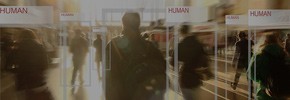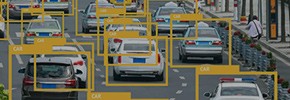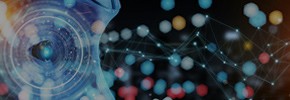Object detection and object recognition are some of the most frequently encountered tasks, or techniques, within the scope of computer vision. It’s not uncommon to see the terms used interchangeably but there is, in fact, a pronounced difference between them.
While object detection is concerned with locating objects, object recognition software seeks to identify them as belonging to one of pre-established classes. Thus, object detection can tell you if there’s a dog in the image, while object recognition will try to determine whether a certain batch of pixels is more likely to be a dog or a cat.
Object recognition will often be a more complex process and a more challenging task for computer vision developers.
How Object Recognition Solutions Work
Approaches to object recognition may vary, and the choice of one depends on conditions like the quality and quantity of images, required performance, development costs, and available functionality.
In many business cases, a basic solution like template matching or image segmentation will do the trick. In some others, developers have to bring out the big guns — machine and deep learning. Let’s have a closer look at the ways they are applied.
Machine Learning
In machine learning-based object recognition, the process begins with manual feature extraction — the analysis of images and videos to discover characteristic features of objects you want recognized. These features are grouped into classes, e.g. a protruding muzzle will belong to the ‘dog’ class and a small nose to the ‘cat’ class. The machine learning model will later rely on these rules to accurately label new objects it comes upon.
Machine learning algorithms need more time and human involvement to achieve high accuracy of object recognition. However, the demands put on dataset size and computational power are relatively low, making the approach more cost-effective.
Deep Learning
With deep learning-based object recognition, the core principle is quite different: an artificial neural network processes is trained on raw data, learning to automatically spot the differences and similarities between objects. Developers can build the model from scratch and train it on a custom dataset or adjust an open source pre-trained model to their needs.
Deep learning can deliver astonishing results in the field of object recognition, but this increased accuracy comes at a price. In general, training images for deep learning models come in millions, and assembling such a collection of well-labeled content is its own challenge.
To process that many images quicker, the system requires plenty of GPU power, which can make the training process very expensive.
Popular Business Cases for Object Recognition
Public Safety
While object detection is good enough for discovering abandoned packages or spotting suspicious behavior, more sophisticated tasks require video object recognition solutions. Latest applications of object recognition for protecting public safety include searching and identifying vehicles (with or without license plate information), recognizing types of weapons wielded by offenders, and even identifying drivers who use their mobile phones behind the wheel.
Video analytics
Object recognition has been successfully applied by media companies to streamline their complex processes from media content editing to orchestration and distribution. With the ability to filter explicit imagery, detect content anomalies, and identify key event moments, object recognition significantly accelerates OTT management workflows while improving content quality control and compliance.
Retail
Retail has been lagging behind online stores in terms of collecting and using real-time product data, but camera object recognition software is about to change that. The new solutions use object recognition and powerful cameras to assist in inventory management, identify low-stock or misplaced items on the shelves, perform quality control, and automate other highly mundane product operations. Every second of time saved results in increased turnover down the line.
Manufacturing
Object recognition and other types of computer vision have proven to be a great asset in the manufacturing complex. By enabling industrial robots to “see” the assembly lines, we can bring quality management to a new level and completely rule out human error. The gained insights can also help tune the process in a way that will reduce waste and boost manufacturing efficiency.
Driverless Cars
Rapid and reliable video object recognition software is the foundation of autonomous driving. The system must indicate road signs or separate pedestrians from buildings with 100% accuracy to cause the right — and safe — reactions from the vehicle. For infallible performance, multiple overlapping mechanisms are designed, such as improving object recognition with intelligent object tracking.
Healthcare
Healthcare image object recognition software, especially its deep learning-based variety, has the potential to save lives by helping doctors diagnose diseases from high-resolution photographs, MRIs, and CT scans.
Medicine is a rare field that already possesses well-organized and labeled collections of images, making deep learning model development faster and easier.
What’s Next for Object Recognition
It seems AI is the next big thing in object recognition, allowing us to build high-performance systems that process images even faster and with better precision. In fact, some AI-powered solutions have already shown a higher accuracy of identifying dangerous cancers than experienced medical professionals.
In addition, with new pre-trained models appearing on the market, more industries will be able to discover the benefits of cost-effective object recognition for tasks that not so long before were impossible to automate.
Oxagile has a long history of designing enterprise-grade computer vision systems – from medical image analysis software to OTT analytics solutions. Contact us to discuss the integration of image recognition and analysis into your workflows.
































